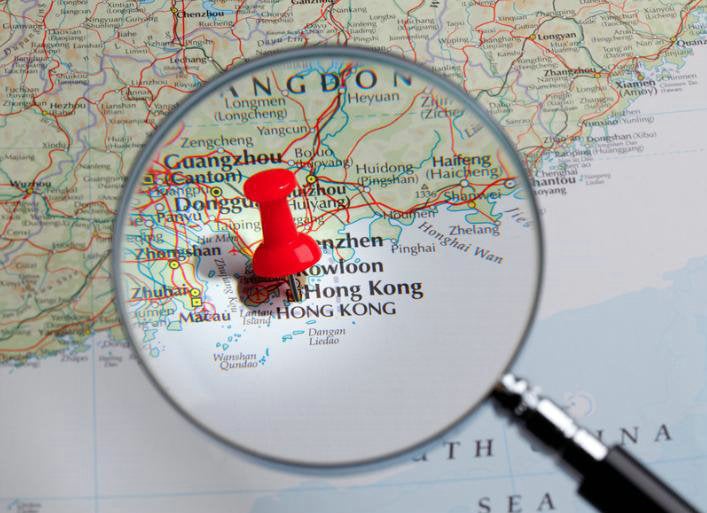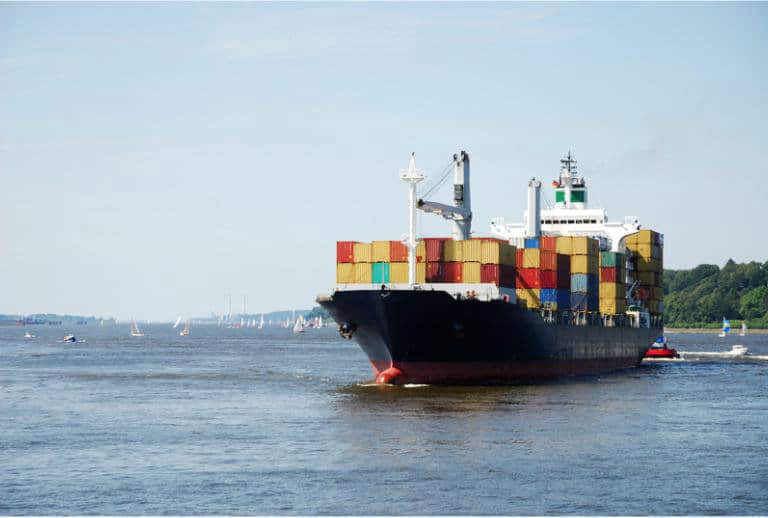
Shipping from Mainland China to Hong Kong is a significant aspect of the trade relations between the two regions. With a high level of economic activity and close geographical proximity, the movement of goods across this border is a routine yet critical process for businesses and individuals alike. Understanding the logistics involved, including the available shipping methods, costs, and customs regulations, is essential for smooth and efficient transit.
As you consider shipping options, you’ll encounter a variety of services ranging from express shipping to freight forwarders offering sea and air shipping. These services cater to a broad spectrum of needs, from time-sensitive documents to large-scale commercial cargo. The choice of service will largely depend on the nature and urgency of the shipment, as well as your budget.
Navigating through the specifics of customs clearance is also a crucial part of the shipping process. Familiarizing yourself with the necessary documentation and duties can prevent unexpected delays. The efficiency of customs clearance in this corridor is bolstered by the mature trade agreements in place, designed to simplify what could otherwise be a complex and daunting task.
Overview of Shipping Routes
When shipping to Hong Kong, you’ll encounter established trade lanes and varying transit times depending on the methods and routes chosen.
Common Shipping Lanes
Shipping goods to Hong Kong typically involves two primary maritime routes. The Pearl River Delta route serves the Western Delta with ports like Guangzhou and Shenzhen. This major artery is popular due to its proximity to Hong Kong and the heavy industrial presence in the region. The second key route is the Eastern Seaboard, connecting ports like Shanghai and Ningbo to Hong Kong. These lanes are used by various vessels, from small feeder ships to large container vessels.
- Pearl River Delta: Guangzhou → Shenzhen → Hong Kong
- Eastern Seaboard: Shanghai → Ningbo → Hong Kong
Major Airports
| Major Airports in Mainland China | Major Airports in Hong Kong |
| Beijing Capital International Airport (PEK) | Hong Kong International Airport (HKG) |
| Shanghai Pudong International Airport (PVG) | |
| Guangzhou Baiyun International Airport (CAN) |
Transit Times
Transit times are crucial for planning and vary widely depending on the type of service and the specific route. Ocean freight shipping may take longer transit times than other modes of transportation.
| Estimated Transit Time | |
|---|---|
| Dalian | 7 days |
| Tianjin | 7 days |
| Ningbo/Shanghai | 6 days |
| Qingdao | 7 days |
| Guangzhou/Shenzhen | 1 day |
| Xiamen | 4 days |
Courier services by air can be even faster, reducing travel time to mere hours.
| Estimated Transit Time | |
| Xi’An | 4 hours |
| Shenzhen/Guangzhou | 30 minutes |
| Qingdao | 4 hours |
| Ningbo/Shanghai | 4 hours |
| Beijing | 5 hours |
| Chongqing | 5 hours |
| Kunming | 3 hours |
| Nanchang | 1 hour |
| Harbin | 4 hours |
| Changsha | 1 hour |
Shipping Methods

When considering the delivery of goods from Mainland China to Hong Kong, you typically have two reliable options: sea freight and air freight. These methods are chosen based on several factors, such as the urgency, volume, cost-effectiveness, and nature of the goods you need to transport.
Ocean Freight
Ocean freight is one of the most economical methods for shipping large volumes of goods. The shipping cost is usually determined by the container size, which comes in two standard dimensions:
- 20-foot container: Typically holds about 25-28 cubic meters of cargo.
- 40-foot container: Can accommodate approximately 55-60 cubic meters.
| Container Size | Volume |
|---|---|
| 20-foot | 25-28 cubic meters |
| 40-foot | 55-60 cubic meters |
Your goods may be shipped as Less than Container Load (LCL) or Full Container Load (FCL), depending on the size of your shipment. LCL combines your goods with others in the same container, offering flexibility for smaller volumes, while FCL is dedicated to larger shipments.
Air Freight
Air freight, a faster yet more expensive option than ocean freight, is suited for time-sensitive shipments. Rates are commonly based on weight and volume, with various airlines offering different rates and transit times.
Consider the following for air freight:
- Weight and volume: Charges increase with the size and weight of your shipment.
- Speed: Ideal for urgent deliveries, with transit times usually within days.
When selecting air freight, ensure your goods are adequately packed and comply with airline regulations, as strict rules for different types of cargo apply.
Cost Considerations
When transporting goods to Hong Kong, understanding the cost structure is critical for effective budgeting and financial planning.
Freight Rates
- Sea Freight: Varies depending on container size and weight. Typically, a 20ft container might cost $500-$1,000, while a 40ft container may range from $1,000-$2,000.
- Air Freight: More expensive yet faster. Prices fluctuate based on cargo weight and service level. Expect to pay around $3-$5 per kilogram.
- Cargo Insurance: Generally a percentage of the cargo value, approximately 0.3%-0.5%.
| Mode of Transport | Cost Range |
|---|---|
| Ocean Freight (20ft) | $500 – $1,000 per container |
| Ocean Freight (40ft) | $1,000 – $2,000 per container |
| Air Freight | $3 – $5 per kilogram |
Duties and Taxes
- Customs Duties: These tariffs depend on the type and value of the goods. For specific rates, consult the Customs and Excise Department.
- Value-Added Tax (VAT): Not applicable in Hong Kong as it is a duty-free port.
- Warehouse and Storage Fees: These fees are applicable if your goods stay in the warehouse longer than expected.
List of Potential Additional Costs:
- Customs clearance fees
- Transport from the port to the final destination
- Local logistics services
- Documentation fees
Customs and Regulations
Navigating Chinese and Hong Kong customs and regulations is crucial for smoothly transporting goods. Stay informed on the specific requirements to ensure compliance and quick clearance.
Export from China
When exporting goods from China, you must register with the Chinese customs authorities and obtain an export license. Your goods must be classified according to the Harmonized System (HS) code, and you should prepare the following documents:
- Commercial Invoice
- Packing List
- Sales Contract
- Customs Declaration
Complying with these requirements helps prevent delays and additional costs. Additional licenses from relevant Chinese authorities are necessary if your goods are subject to export controls.
Import to Hong Kong
Hong Kong operates a free port with minimal restrictions and tariffs on goods. As you import goods into Hong Kong, you’re typically required to provide:
- Import Declaration
- Cargo Manifest
- Bill of Lading or Air Waybill
Despite Hong Kong’s lax import tax regime, controlled and prohibited items, such as drugs, weapons, and some chemicals, must meet specific conditions. Always verify whether your imported goods fall under these categories and obtain the necessary permits if applicable.
Documentation Required
Accurate documentation is crucial for a smooth process when conducting business between Mainland China and Hong Kong. Proper paperwork ensures compliance with regulations and the timely clearance of your goods.
Shipping Invoices
Your shipping invoices must be comprehensive and clear. They need to include:
- Consignee details: Name, address, and contact information.
- Item descriptions: Full description of the goods.
- Quantity: Number of units, boxes, or packages.
- Value: The total value of the shipment, listed in the correct currency.
- Origin: The country of manufacture.
- HS Codes: Harmonized System codes for product classification.
- Terms of Delivery: Incoterms, specifying the delivery terms and responsibilities.
Customs Declarations
Customs declarations are a mandatory part of the shipping process. Ensure you provide the following:
- Declaration Form: Completed accurately and signed.
- List of Goods: Detailed list including quantities and values.
- Exporter and Importer Information: Including tax identification numbers.
- Licenses or Permits: If applicable, depending on the type of goods being shipped.
- Certifications: Such as Certificate of Origin, if required.
Packaging and Handling

When shipping to Hong Kong, your goods must be properly packaged and handled with care to ensure they arrive in perfect condition.
Packaging Standards
Your items should be packed in accordance with international standards, using materials that are sturdy and suitable for the type of goods you’re transporting. Cardboard boxes should be corrugated and high-quality to withstand stacking and shifts in transit. Using sufficient cushioning like bubble wrap or foam peanuts is critical, especially around corners and sides. Ensure that liquid containers are sealed tightly and placed in leak-proof bags. For clothing and fabrics, plastic wrap or poly bags are recommended to protect against moisture. The weight limit per box must be adhered to prevent box ruptures during handling.
Labels and Documentation: Make sure to clearly label each package with the necessary shipping and handling information. This includes the recipient’s address, a description of the contents, and any hazardous material notices, if applicable. Use waterproof labels and place a duplicate inside the package for added security.
Handling Fragile Goods
Fragile items demand additional precautions. Begin with a double-boxing method where the item is placed in a smaller box, which is then placed inside a larger box with cushioning in between. Use specialized “Fragile” stickers to alert handlers of the need for extra care. For electronic goods, static-free packaging materials are crucial to prevent electrostatic discharge damage. Glass items should have each piece individually wrapped in bubble wrap or foam and separated with cushioning to avoid contact and friction.
Securing the Package: Seal all openings and seams of your boxes with heavy-duty, pressure-sensitive packing tape. Ensure that the boxes are sealed tightly so items can’t move around during transportation, which can lead to breaks or other damage.
Insurance and Liability
When shipping to Hong Kong, it’s essential to understand your insurance options and how to navigate claim processes in the event of loss or damage to your goods.
Insurance Options
Choosing the Right Insurance: When selecting insurance for your shipment, ensure that the policy covers the full value of your cargo. You have two main types of insurance to consider:
- All-Risk Insurance: This policy provides comprehensive coverage against all possible risks, except those explicitly excluded in the contract.
- Named Perils Insurance: Coverage is provided only for the risks named in the policy.
| Insurance Type | Coverage Scope |
|---|---|
| All-Risk Insurance | Provides broad coverage, excluding listed exceptions such as natural disasters and acts of war. |
| Named Perils Insurance | Covers specifically listed risks, such as theft, pilferage, or non-delivery. |
Value Declaration: Ensure you accurately declare the value of your goods. Under-declaration may result in insufficient compensation, while over-declaration can lead to higher premiums.
Claim Processes
Filing a Claim: In the event of loss or damage, you must
- Notify your insurer immediately.
- Submit a detailed claim form, including:
- Invoice of the shipment.
- Delivery documentation.
- Photographic evidence of damage, if applicable.
List of Claim Documentation:
- Commercial invoice.
- Packing list.
- Bill of lading or airway bill.
- Insurance certificate.
- An inspection report by a third party, if conducted.
- Correspondence with the carrier regarding the loss or damage.
Timeframe for Claims: Claims should be filed within the time limits set by your insurance provider. Failure to report in time can result in the denial of your claim.
Important: Always review the insurer’s guidelines for claim filing procedures to ensure compliance and a smoother claims process.
Technology in Shipping
Incorporating advanced technologies has significantly increased the efficiency and reliability of shipping goods from China to Hong Kong.
Tracking Systems
Your shipments are constantly under surveillance with the latest tracking systems, providing real-time location updates. The deployment of RFID tags and GPS technology ensures that you can monitor your cargo from departure to arrival. See the table below for a comparison of tracking technologies:
| Technology | Advantages | Disadvantages |
|---|---|---|
| RFID Tags | Non-line of sight, bulk scanning, fast processing | Limited range, cost |
| GPS | Global coverage, highly accurate | Higher power consumption, more expensive |
Automation in Logistics
Your supply chain’s speed and accuracy are greatly boosted by automation. Automated guided vehicles (AGVs) navigate warehouses without human intervention, while automated sorting systems categorize items at high speeds, streamlining the handling process. Automation’s impact includes:
- Increased efficiency: Continuous, 24/7 operations are now possible.
- Reduction in human error: Consistency in handling and reduced chances of mistakes.
Challenges and Risk Mitigation
Your shipping freight may encounter a number of challenges that require strategic planning to mitigate risks effectively.
Weather Delays
The Pearl River Delta is susceptible to unpredictable weather, specifically typhoons, which can cause significant delays in shipping. To minimize risk, monitor weather forecasts and plan for alternate routes ahead of time. Establishing a Flexible Shipping Schedule is vital to adapt to changes swiftly. Here’s a strategic approach to tackle weather delays:
- Advance Planning: Schedule shipments with buffer time for unforeseen weather interruptions.
- Weather Insurance: Consider purchasing insurance that specifically covers weather-related delays.
Regulatory Changes
Regulatory shifts can arise with little warning and may affect your shipping processes. Stay informed about the latest policies using government resources and trade associations. Implement strategies such as:
- Regular Compliance Reviews: Regularly review your shipping practices for compliance with new regulations.
- Professional Consultation: If needed, seek advice from experts knowledgeable about cross-border trade laws.
Documentation Preparedness is essential. Ensure all shipping documents are accurate and complete to prevent customs hold-ups due to regulatory changes.
Sustainability in Shipping
In the context of shipping from China to Hong Kong, sustainability focuses on minimizing environmental impact and adhering to regulatory frameworks.
Eco-Friendly Practices
Your shipping strategy can incorporate eco-friendly practices to reduce the carbon footprint.
- Utilize fuel-efficient ships to lessen emissions.
- Implement slow steaming, where ships operate at reduced speeds to cut fuel consumption.
- Use cleaner fuels like LNG (Liquefied Natural Gas) to power vessels.
- Incorporate energy-saving technologies, such as advanced hull designs and air lubrication systems, to improve hydrodynamic efficiency.
Regulatory Compliance
Maintaining regulatory compliance is crucial for sustainable shipping.
- Adhere to the International Maritime Organization (IMO) regulations, which limit sulfur content in fuel.
- Follow China’s domestic shipping regulations, which may include emission control areas (ECAs) where stricter standards apply.
- Ensure your operations comply with the Hong Kong Air Pollution Control (Ocean Going Vessels) (Fuel at Berth) Regulation, which mandates using compliant fuel while berthed in Hong Kong.
Why Choose Us? Luckystar Logistic
Luckystar is a distinguished freight forwarder founded in 2022. As a licensed Non-Vessel Operating Common Carrier (NVOCC) with the Federal Maritime Commission (FMC), Luckystar specializes in providing economical global shipping solutions with excellent service. Led by a veteran logistics team with over 20 years of industry expertise, Luckystar is dedicated to supplying dependable, flexible, and responsive international door-to-door freight transport and efficient shipping services.
Here’s why partnering with Luckystar is advantageous:
- Reliable On-Time Delivery: We minimize delivery delays, ensuring timely shipment arrival, which is vital for businesses to swiftly supply goods to customers.
- Global Shipping Reach: We ship to virtually any location worldwide, presenting tremendous global growth opportunities for businesses wanting to expand their reach abroad.
- Easy Shipment Tracking: Our stringent processes enable live tracking, letting you easily monitor shipment progress at every transportation stage for peace of mind.
- Personalized End-to-End Service: A dedicated Luckystar team member personally supervises your door-to-door shipment from start to finish while proactively updating you throughout for transparency.
Seeking an accomplished freight forwarder? Contact us now – we eagerly assist companies in expertly shipping cargo internationally at extremely affordable transportation costs. It is recommended to consult our experts today to leverage our unparalleled cheap international shipping!
